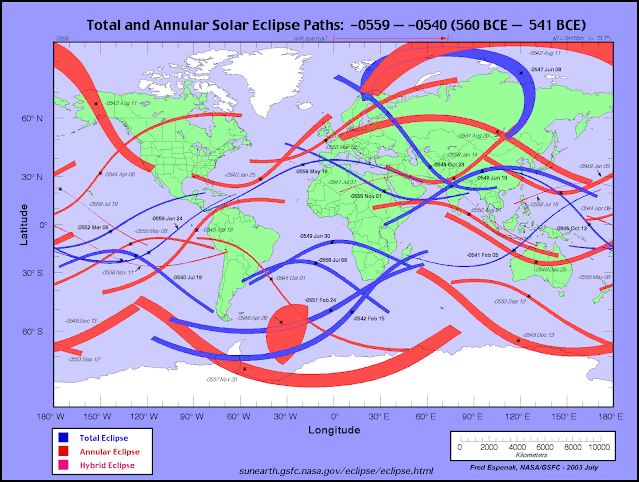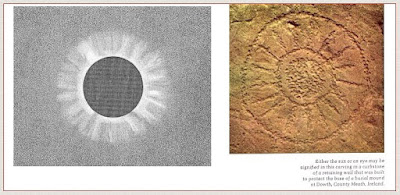The Iranian - Zoroastrian Faravahar Symbol
According to this web page about the faravahar, the Iranian-Persian-Zoroastrian version of the Mesopotamian winged disk symbol appeared in its present form during the Achaemenid Empire (c. 550-330 BCE), and continued in use until the fall of the Sassanian Empire (224-651 CE) to the Muslim Arabs in 651 CE.
In that I have reasonable grounds to believe that Mesopotamian winged disk symbols were originally inspired by observations of a bird-like pattern that is perceivable in the sun's corona during some total solar eclipses, it occurred to me that the adoption of the winged disk symbol by the Achaemenid Empire might have been prompted by one or more total solar eclipses above Iran during the 6th century BCE.
This map from NASA's World Atlas of Solar Eclipse Paths shows a total solar eclipse occurring above south western Iran at sunrise on May 19, 557 BCE. This NASA map also shows another total solar eclipse occurring above north eastern Iran just over a decade later on October 23, 547 BCE. The map also shows that an annular eclipse preceded these total solar eclipses on January 14, 559 BCE. As if this as not enough, this map of solar eclipse paths between 560 BCE and 541 BCE also shows a hybrid eclipse occurring above southern Iran on July 31, 542 BCE.
This suggests to me that this series of solar eclipses above Iran, to say nothing of other parts of Mesopotamia or the Middle East, such as Iraq, Syria and Lebanon, probably did play a role in the Achaemenid Empire adopting an updated version of the Mesopotamian winged disk symbol that remains in use by Zoroastrians and Iranians in 21st century.







Comments
Post a Comment